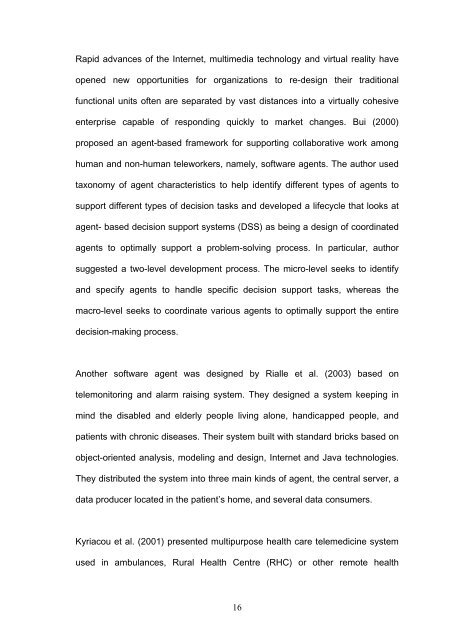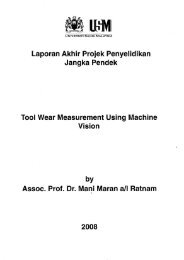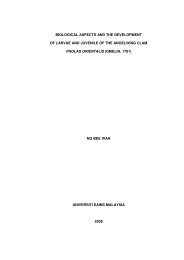design and development of a secure wireless ... - ePrints@USM
design and development of a secure wireless ... - ePrints@USM
design and development of a secure wireless ... - ePrints@USM
Create successful ePaper yourself
Turn your PDF publications into a flip-book with our unique Google optimized e-Paper software.
Rapid advances <strong>of</strong> the Internet, multimedia technology <strong>and</strong> virtual reality have<br />
opened new opportunities for organizations to re-<strong>design</strong> their traditional<br />
functional units <strong>of</strong>ten are separated by vast distances into a virtually cohesive<br />
enterprise capable <strong>of</strong> responding quickly to market changes. Bui (2000)<br />
proposed an agent-based framework for supporting collaborative work among<br />
human <strong>and</strong> non-human teleworkers, namely, s<strong>of</strong>tware agents. The author used<br />
taxonomy <strong>of</strong> agent characteristics to help identify different types <strong>of</strong> agents to<br />
support different types <strong>of</strong> decision tasks <strong>and</strong> developed a lifecycle that looks at<br />
agent- based decision support systems (DSS) as being a <strong>design</strong> <strong>of</strong> coordinated<br />
agents to optimally support a problem-solving process. In particular, author<br />
suggested a two-level <strong>development</strong> process. The micro-level seeks to identify<br />
<strong>and</strong> specify agents to h<strong>and</strong>le specific decision support tasks, whereas the<br />
macro-level seeks to coordinate various agents to optimally support the entire<br />
decision-making process.<br />
Another s<strong>of</strong>tware agent was <strong>design</strong>ed by Rialle et al. (2003) based on<br />
telemonitoring <strong>and</strong> alarm raising system. They <strong>design</strong>ed a system keeping in<br />
mind the disabled <strong>and</strong> elderly people living alone, h<strong>and</strong>icapped people, <strong>and</strong><br />
patients with chronic diseases. Their system built with st<strong>and</strong>ard bricks based on<br />
object-oriented analysis, modeling <strong>and</strong> <strong>design</strong>, Internet <strong>and</strong> Java technologies.<br />
They distributed the system into three main kinds <strong>of</strong> agent, the central server, a<br />
data producer located in the patient’s home, <strong>and</strong> several data consumers.<br />
Kyriacou et al. (2001) presented multipurpose health care telemedicine system<br />
used in ambulances, Rural Health Centre (RHC) or other remote health<br />
16

















